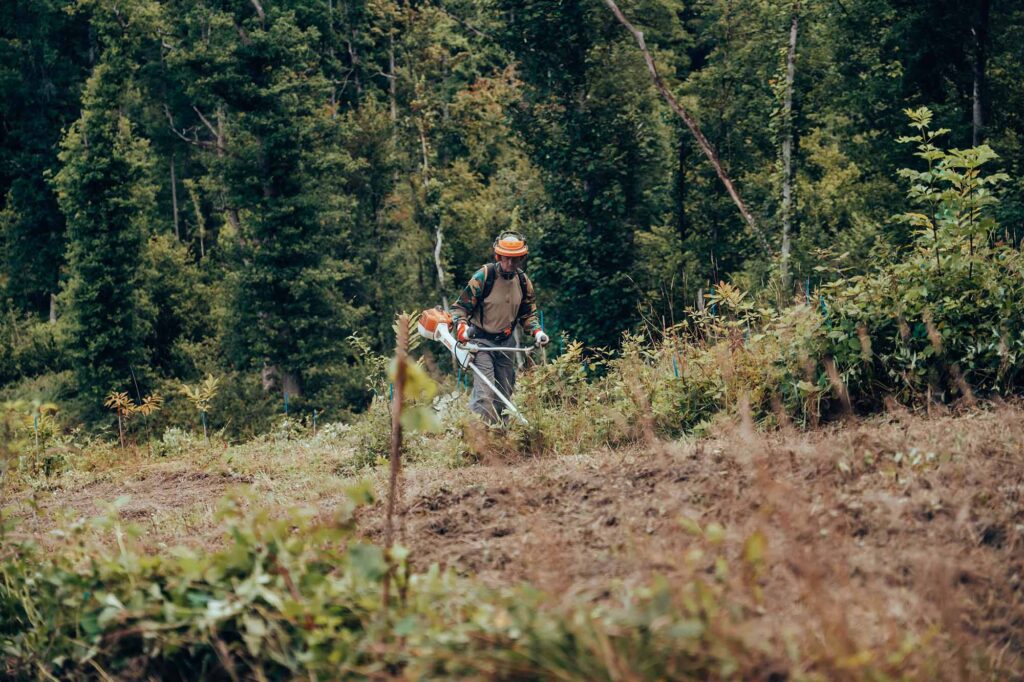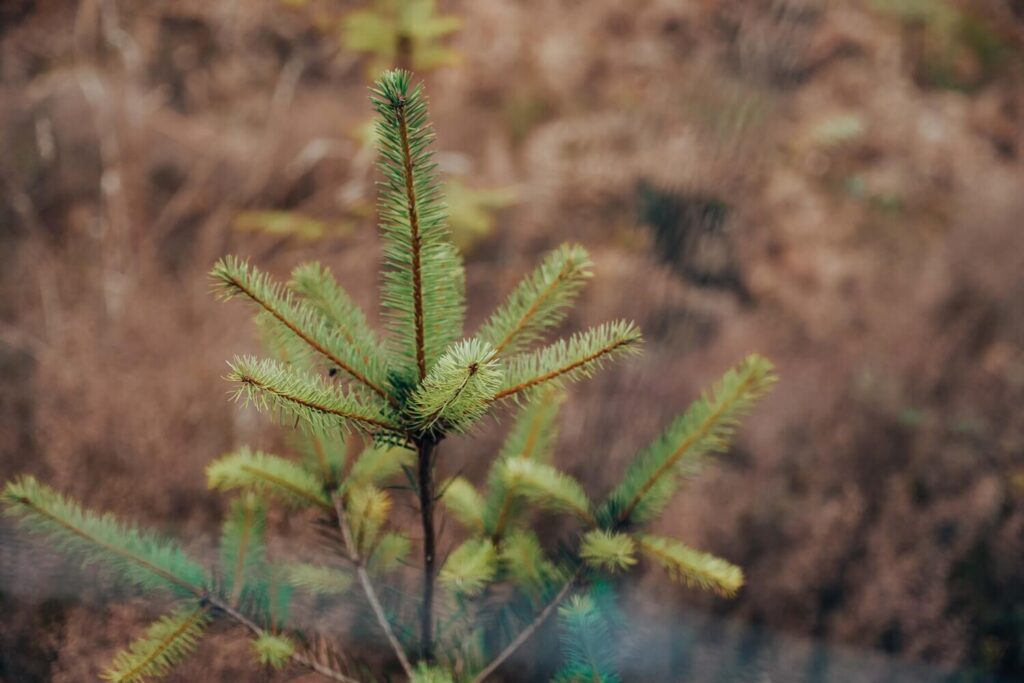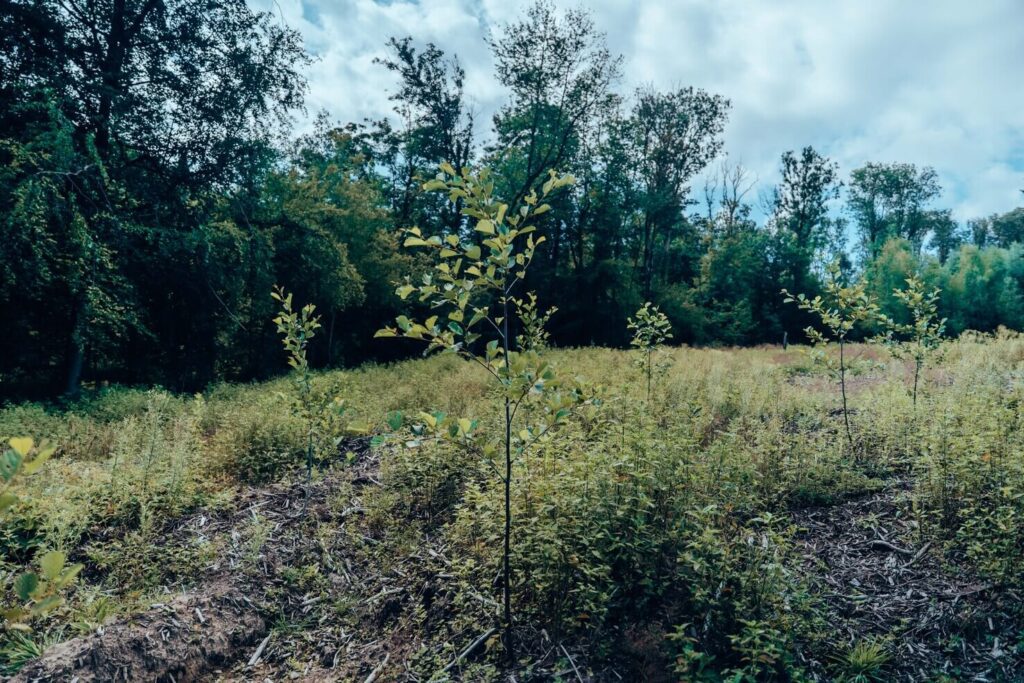An interesting article published in Forest Ecology and Management sheds light on a question we often receive at Go Forest: why do we thin our forests?
In the meta-analysis, Chagnon et al. (2025) analyzed 50 peer-reviewed field studies across temperate and boreal forests in Europe and North America. They examined how different thinning strategies impact forest resilience and resistance to four major stressors: drought, pests, windstorms and fire.
What is thinning? Why do we do it?
Thinning is a silvicultural or forest‐management technique that involves the selective removal of trees within a stand to reduce competition among remaining trees for vital resources such as light, water, nutrients, sometimes space and also root‐zone volume. By removing trees that are suppressed, less vigorous, invasive or poorly adapted, we give the remaining trees a better chance to access resources, grow more vigorously and develop stronger root systems. This generally improves stand health.
The study by Chagnon et al. (2025) distinguishes between different thinning approaches and considers different thinning intensities. They’ve examined how these thinning practices interact with forest age, species composition and site conditions to influence resilience outcomes.
At Go Forest, thinning is used as a tool to:
- Improve tree health and growth potential
- Reduce vulnerability to drought and pests
- Support natural regeneration
- Prepare forest stands for longer-term resilience under climate change

What the research found
The meta-analysis revealed several key findings:
1. Overall positive impact
For temperate and boreal forests, results from the meta-regressions provide strong evidence that, overall, thinning tends to increase the resilience and resistance of forest stands to multiple stressors. Importantly, no statistically significant negative effect was detected on the broad scale.
This means that, while caution and tailoring are essential, thinning generally helps maintain or improve the overall resilience and resistance of forests.
2. Drought
Thinning treatments, especially those that reduced competition strongly (for example heavier thinning from below), improved tree survival and growth during and after drought events. The mechanism: by reducing tree‐to‐tree competition, remaining trees had more access to water and improved root development, making them better prepared for water stress.
3. Pests
The analysis found that selective thinning (for example sanitation thinning) that removed vulnerable or infected trees increased forest resistance to insect and pathogen outbreaks. This was particularly effective in coniferous stands.
By removing weaker or vulnerable trees, you reduce host availability, improve vigor of residual trees, and thus forest stands are better able to resist or recover from pest attack.
4. Fire
Thinning proved effective in reducing fire severity in many cases. Primarily by removing “ladder fuels” (small trees & dense understory), as these facilitate surface fires climbing into the canopy. However, the benefits of thinning for fire risk strongly depend on post-treatment management and on-site conditions. If debris is left unmanaged, thinning can inadvertently increase fuel loads and fire risk.
5. Windstorms
Interestingly, the results for windstorms were not significant across the meta‐analysis. The reasons: wind damage depends strongly on structural factors, species, age, tree‐height‐to‐diameter ratio, site exposure, terrain and timing of thinning. This makes the outcome highly variable.
The research by Chagnon et al. (2025) provides robust support for the use of thinning as a powerful climate adaptation tool when applied thoughtfully. It shows that thinning in many contexts can enhance forest resilience and reduce vulnerability to drought, pests and fire. However, considerable nuance is needed in design and implementation.
How we apply thinning at Go Forest
At Go Forest, we embrace thinning not as a one‐size‐fits‐all solution, but as a strategic intervention, carefully tailored to stand conditions, species and risk profiles, and embedded within a longer‐term resilience approach. Our planting ensures that sites remain wooded for at least 30 years, with an 80% survival rate. Thinning activities are thoughtfully planned to support forest health and resilience, and the harvested wood can be sold by the landowner, providing a responsible way to manage the forest while maintaining its ecological value.
Reference
Chagnon, C., Dumont, S., Morin-Bernard, A., Jactel, H., Achim, A., & Moreau, G. (2025). Potential of thinning to increase forest resilience and resistance to drought, pest, windstorm and fire: A meta-analysis. Forest Ecology and Management, 590, 122788. https://doi.org/10.1016/j.foreco.2025.122788








